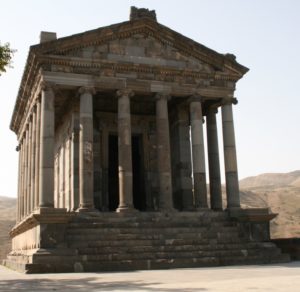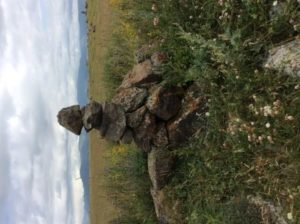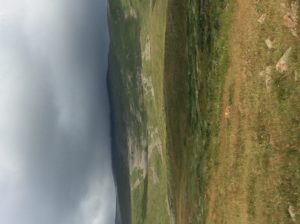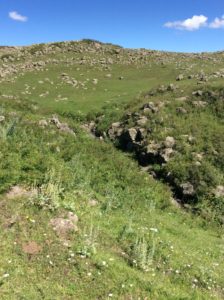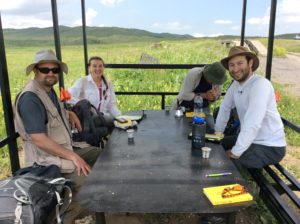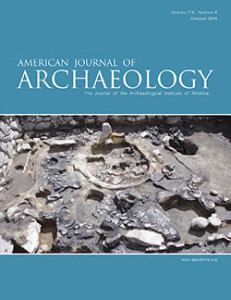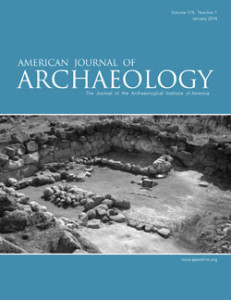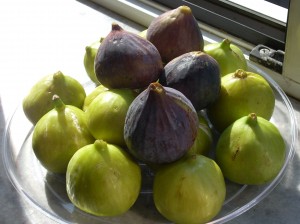An email from a journalist inquiring about the Garni Temple pointed me to an interesting project: My Armenia, a collaboration between the Smithsonian Institution, USAID, and Armenia itself. The project seeks to document the cultural heritage of Armenia. The Smithsonian’s website has also increased the attention it pays to the country, running articles on the Garni Temple, as well as on issues of the biology and geography of Armenia.
Tag Archives: Armenia
ASOR 2016, and our *online community* is up and running!
We had a great “Archaeology of the Black Sea and Caucasus” session this year at ASOR, with excellent talks from Tiffany Earley-Spadoni, Nat Erb-Satullo, Walter Crist, and Hannah Chazin. We also announced the opening of our online forum, generously supported by the American Research Institute of the South Caucasus.
To join the conversation, please follow the instructions here: South Caucasus Forum Registration.
Coming down the mountain (everybody has their own opinion)
Groundtruthing, or checking out on the ground anomalies and architecture seen in the satellite imagery, is a necessary step in identifying cultural remains. We went high on the slopes of Mt. Aragats yesterday, to take a look at a site that looked like a settlement with some recent activity. Amongst the architecture, we found a fascinating series of stacked and standing stones picking out a roughly north-south line across the summits of multiple slopes.
However, we were already high up on the flank of the mountain, high enough that the “scree” drainages in this photo are actually made of boulders — and high enough that the cloud obscuring the summit was worrisome.
Survey says…
One way to conduct an archaeological survey is to examine satellite imagery as a way to focus attention on particular areas. This summer, the Kasakh Valley Archaeological Survey looked at high resolution satellite images of the area east of Mt. Aragats and identified a number of intriguing sites.
In this case, I found a series of rooms that seem to be enclosed by a wall, to the south of the shallow gorge in the upper third of this image. We established that it was within our survey area and the next morning, off we went to take a look. After a first attempt to drive there in our UAZ, we circled around from the north and hiked in across the gorge.
This is looking northwest from the settlement, across the gorge–which was not very deep, and the rivulet at the bottom, like many water courses in Armenia, had many conveniently-placed stones useful for crossing. Continue reading
Survey in the upper Kasakh River valley
Project ArAGATS, the joint Armenian-American project on the Archaeology and Geography of Ancient Transcaucasian Societies, has begun surveying the Kasakh River valley in central Armenia over the past couple of years. We’re recording burials, burial clusters, settlements, fortresses, stelae, evidence of Soviet-era land amelioration practices, and more. This year, we’re working around the northeastern foothills of Mt. Aragats, to continue the project of understanding the relationship of ancient architecture and material culture to ancient life.
Ian Lindsay and Alan Greene are co-directing the survey this year, with multiple team members from Project ArAGATS, including Salpi Bocchieriyan, and Karen Azatyan, pictured here with Ian and Alan on a well-deserved coffee break after a morning of tromping around the mountains.
To keep up with the excitement of counting sherds and obsidian flakes, or other aspects of Project ArAGATS’ multiple projects, follow @egafagan and @aragatsfound on Twitter.
AJA cover – again!
The Project ArAGATS crew must have very photogenic trenches – we are on the cover of the American Journal of Archaeology for the second time in 2014. Last time, it was for a trench I excavated in 2011 at Tsaghkahovit, in the Iron Age complex. This time, it is a photo of a shrine area, one of many excavated at Gegharot, an Early and Late Bronze Age fortress on the flanks of the Pambak Mountains bounding the Tsaghkahovit Plain. Project ArAGATS has been working in Armenia since 1998, making it one of the longest-running collaborative projects still working in Armenia.
Front cover of the American Journal of Archaeology!
The journal of the Archaeological Institute of America used to have a cover dominated by its adorable owl crest and the title, but it appears that they have changed the format to include a photo and more dynamic use of color. And whose work is on the very first photo cover? Yes, that would be mine: http://www.ajaonline.org/nonsubscription The premier American classical archaeology journal chose to feature not Athens, nor Rome, not even Palmyra or Pergamum, but Tsaghkahovit’s Room WSI! The link above will likely change when the new issue is released, so I’m including a (sadly pixellated) image of the cover here, too. A better look at the room can be found here, and to read more about our work at Tsaghkahovit, you can go here to the Project ArAGATS website.
A treasure hunt, of sorts
I have not had much time to update the blog lately, but I was asked by the Social Sciences Division at the University of Chicago to contribute to their blog. You can find the entry here: https://socialsciences.uchicago.edu/blog/student/treasure-hunt-sorts
More on pedagogy later this month! I’ll be part of a panel on flexibility and adjustments in the classroom for the UChicago Workshop on Teaching in the College. Details here: http://teaching.uchicago.edu/?workshops-and-seminars/workshop-on-teaching-in-the-college-2013.html
Independence Day, Armenia-style
On September 21st, Armenia celebrated its 20th anniversary of independence from the Soviet Union. There were concerts, dance performances, and a general party atmosphere all over the center of Yerevan. In the evening, Republic Square was transformed into one large concert- and show venue, where a full orchestra played while dancers danced, singers sang, and a visual history of Armenia was projected onto the History Museum of Armenia as well as the two government buildings flanking it (the ministries of Foreign Affairs and Finance). I’ve never seen anything like the light show played on the buildings; these photos don’t do it justice. It was really remarkable.
I had spent the evening with a couple of friends, talking, eating fruit and treats, drinking cognac and rose liqueur, and I decided I needed to witness the events in Republic Square. A 20th anniversary only comes around once—and I figured that such a milestone would be perceived a little differently than, say, our 235th anniversary of independence. I started my investigations into the holiday by talking with friends and colleagues, asking what they thought of the anniversary—both in general, and specifically, of the celebrations the government was planning. The celebrations had clearly been in the works for a long time, including not just that day’s activities, but also an entire printed campaign with signs proclaiming “Hayastany Du Es!”, or, you are Armenia!, as well as a music video that played frequently all summer: http://www.youtube.com/watch?v=6dULlTcVjNk . Continue reading
Reflections on a return
I started to write a little bit about the things that I’ve missed in Armenia since leaving last year, but it quickly ceased to be “a little bit,” and so instead, I’ll talk about one of the most important things I’ve missed: the fresh fruit and vegetables. I love my neighborhood produce store in Chicago, don’t get me wrong, but the summer produce here is incredible: peaches as big as softballs and as sweet as honey, watermelon that melts in your mouth, juicy figs that don’t cost an arm or a leg (maybe an ankle, but they’re worth it), and the tomatoes. Oh, the tomatoes. Juicy, bright red, tender, flavorful—not picked green and then sent to a warehouse. All summer, before arriving here in August, I would look at even the organic tomatoes at my store in Chicago and sigh, reminding myself that true vine-ripened tomatoes were waiting for me in Armenia.
Armenia’s fruit- and vegetable-basket is the Ararat plain, a mountainous plateau that has been at the heart of Armenia since time immemorial. Armenia has a number of inactive volcanoes and calderas in and around it, and it seems that the volcanic soil has a near-magical ability to grow a wide (and delicious) variety of fruits and vegetables. One of the traditional dishes here is khorovats, or barbecue, where pieces of meat are placed on skewers and cooked over coals. The meat is accompanied by whole peppers (spicy or not), eggplants, and tomatoes, all of which are also skewered and barbecued. There might be a variety of side dishes as well—sauteed eggplant slices with garlic and walnuts, fresh herbs, homemade yogurt and cheese, potatoes, mushrooms, a million kinds of salads—but the simple preparation of the barbecued vegetables is mouthwateringly fantastic, with its combination of the charred exterior and the tender, juicy inside. I don’t eat meat, but I’ve never left a khorovats dinner without being stuffed.
When I first stayed in Yerevan in 2008 (before that, I had only lived in a smaller town called Aparan), even the large supermarkets had mostly seasonal produce. That meant that in the winter, there’d be primarily squashes and root vegetables, but it also meant that everything was fresh and not designed for optimal transportation. Now, you can find quinces from Moscow, lemons from Georgia, and, to my surprise (and error) last week, apples from New Zealand. I meant to buy some tasty local apples for my husband, but clearly, I should have been suspicious when I saw stickers on the fruit. The last New Zealand apple is still on our table, while we’ve eaten our way through peaches, figs, and local apples.
There are many traditional dishes available in Armenia, but my tastes are quite simple and tend to revolve around the fresh, delicious produce. I also find that I’m spoiled and rarely even buy some of these fruits and vegetables back in Chicago, preferring to avoid the mediocre and wait for the fantastic, when I come back to Armenia. I’m lucky that I get to come back frequently; scurvy isn’t fun, from what I hear.

